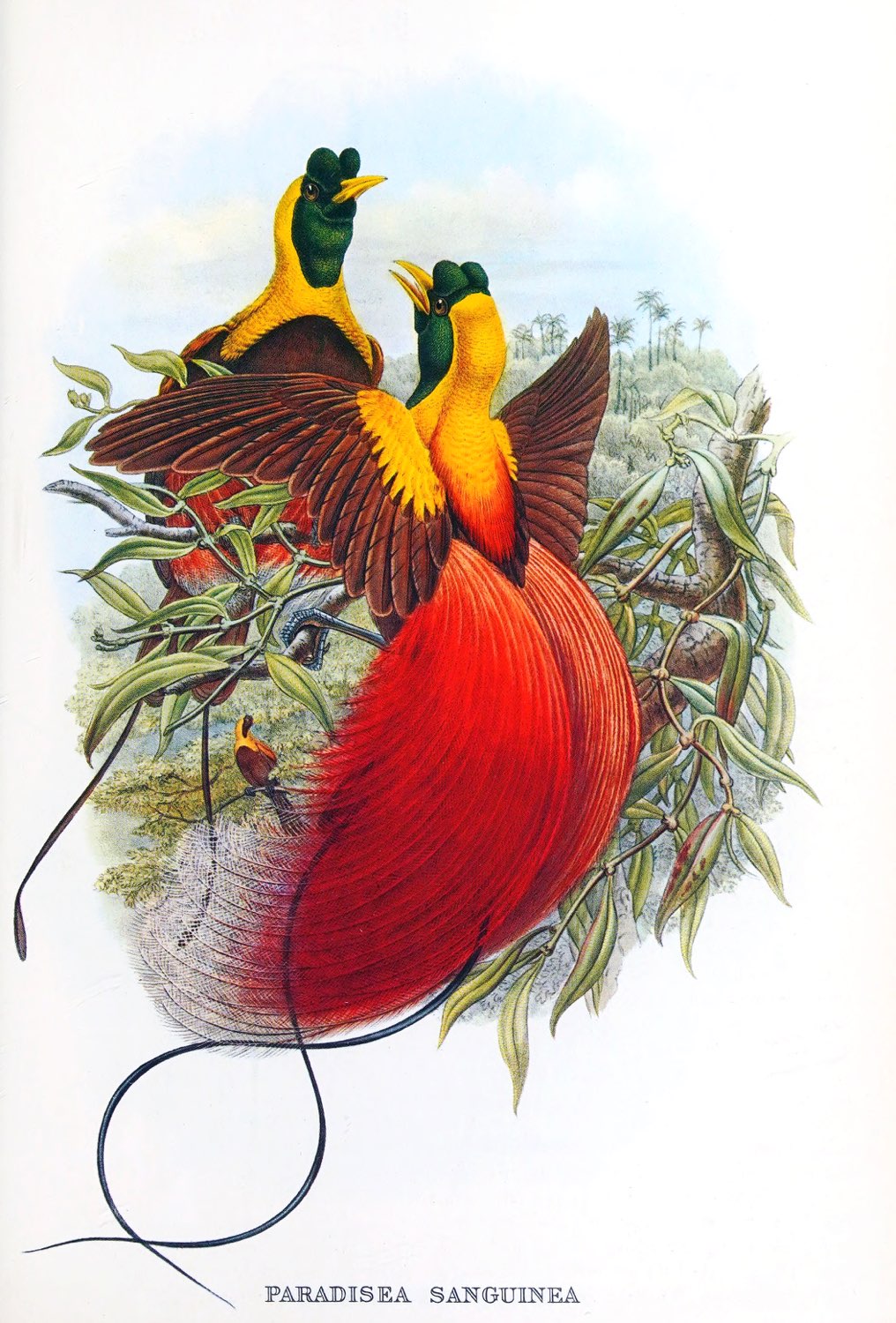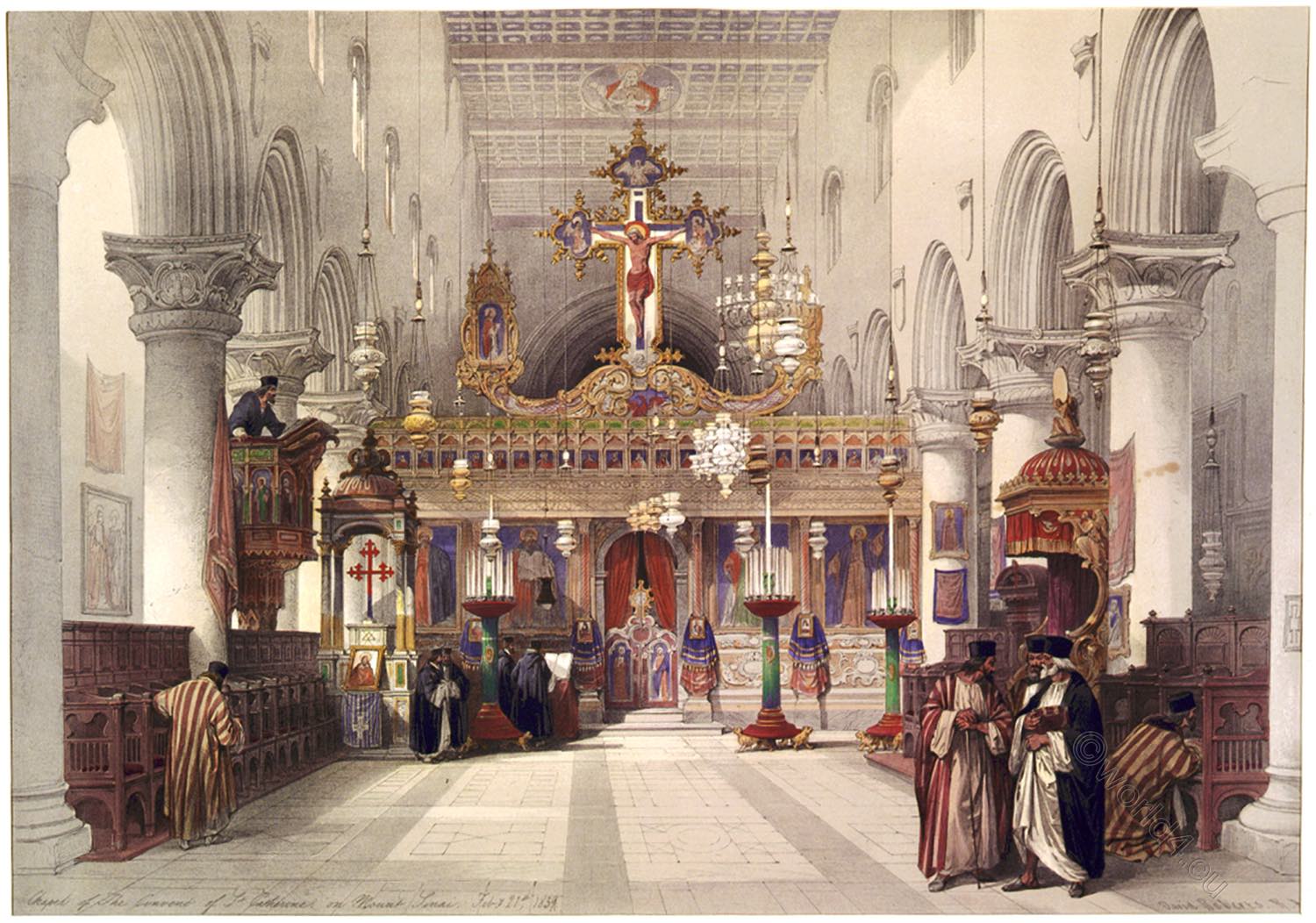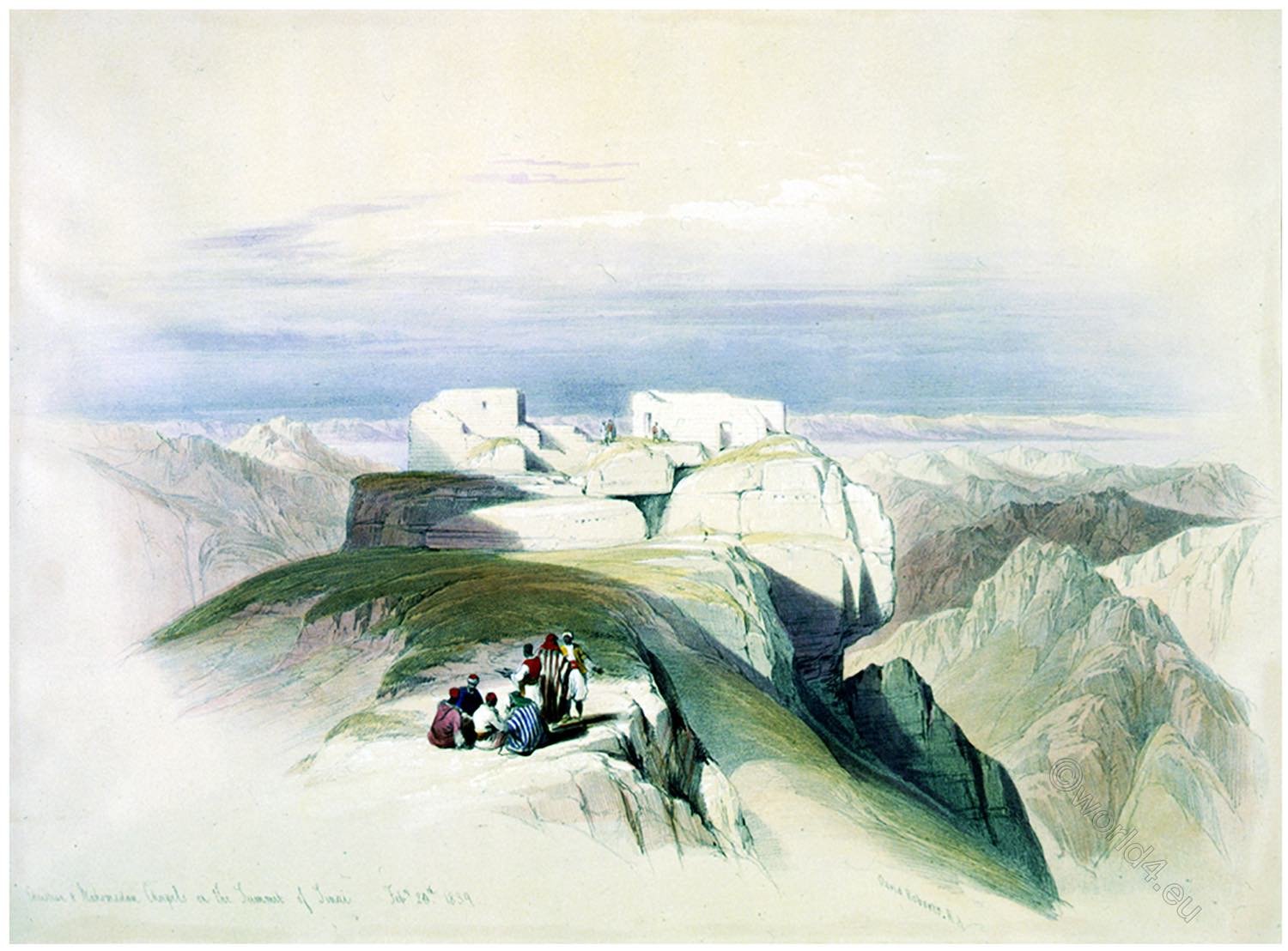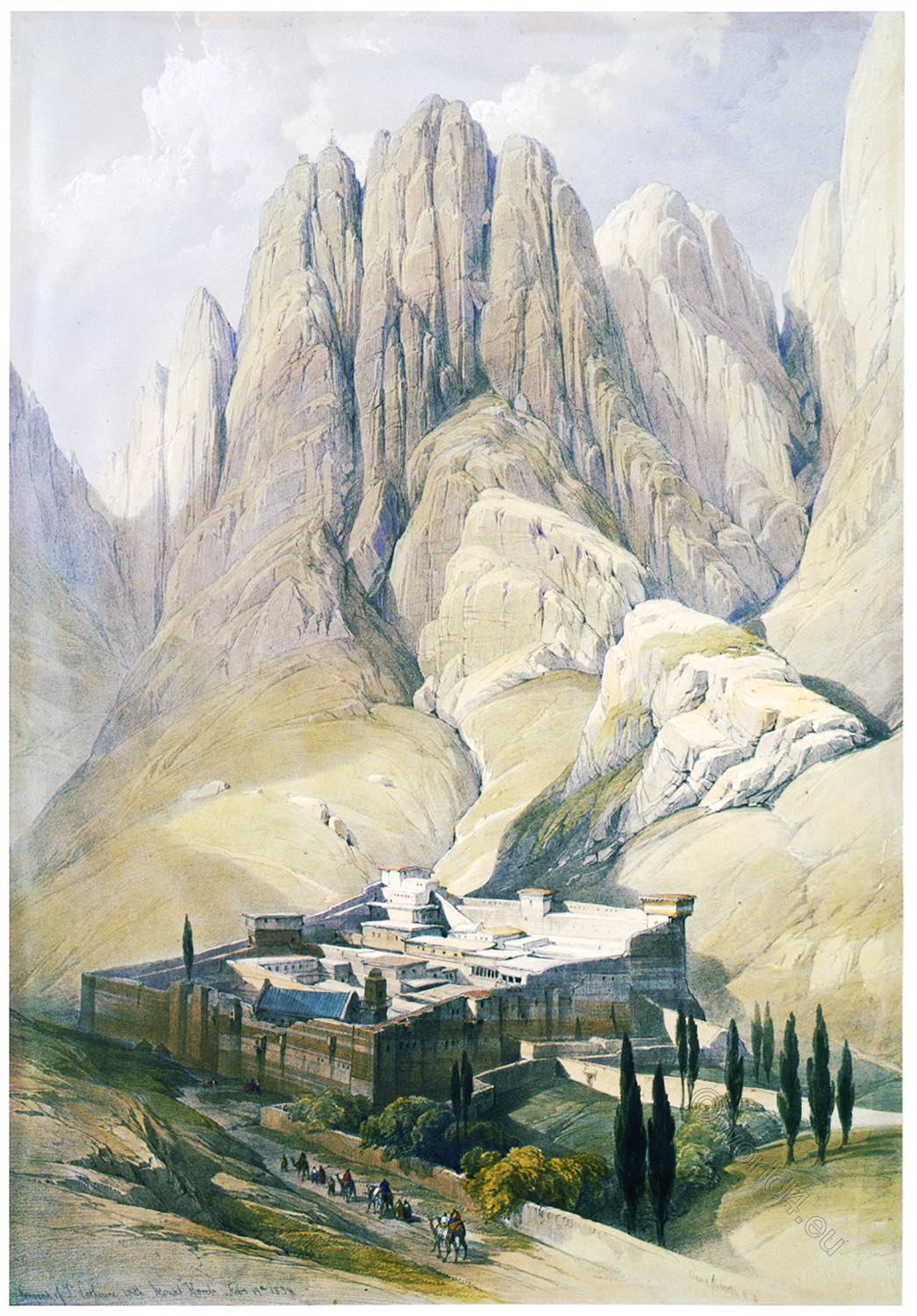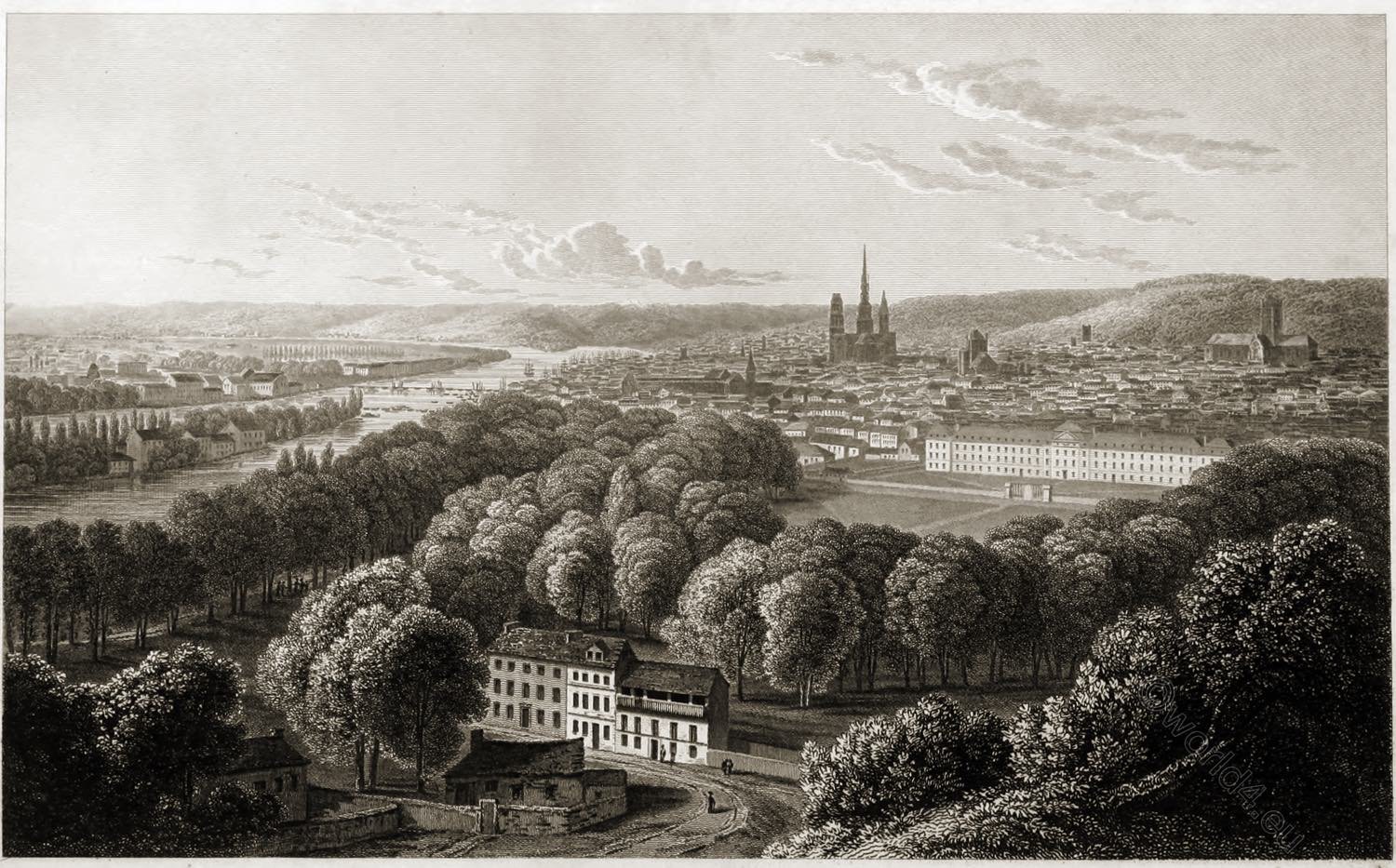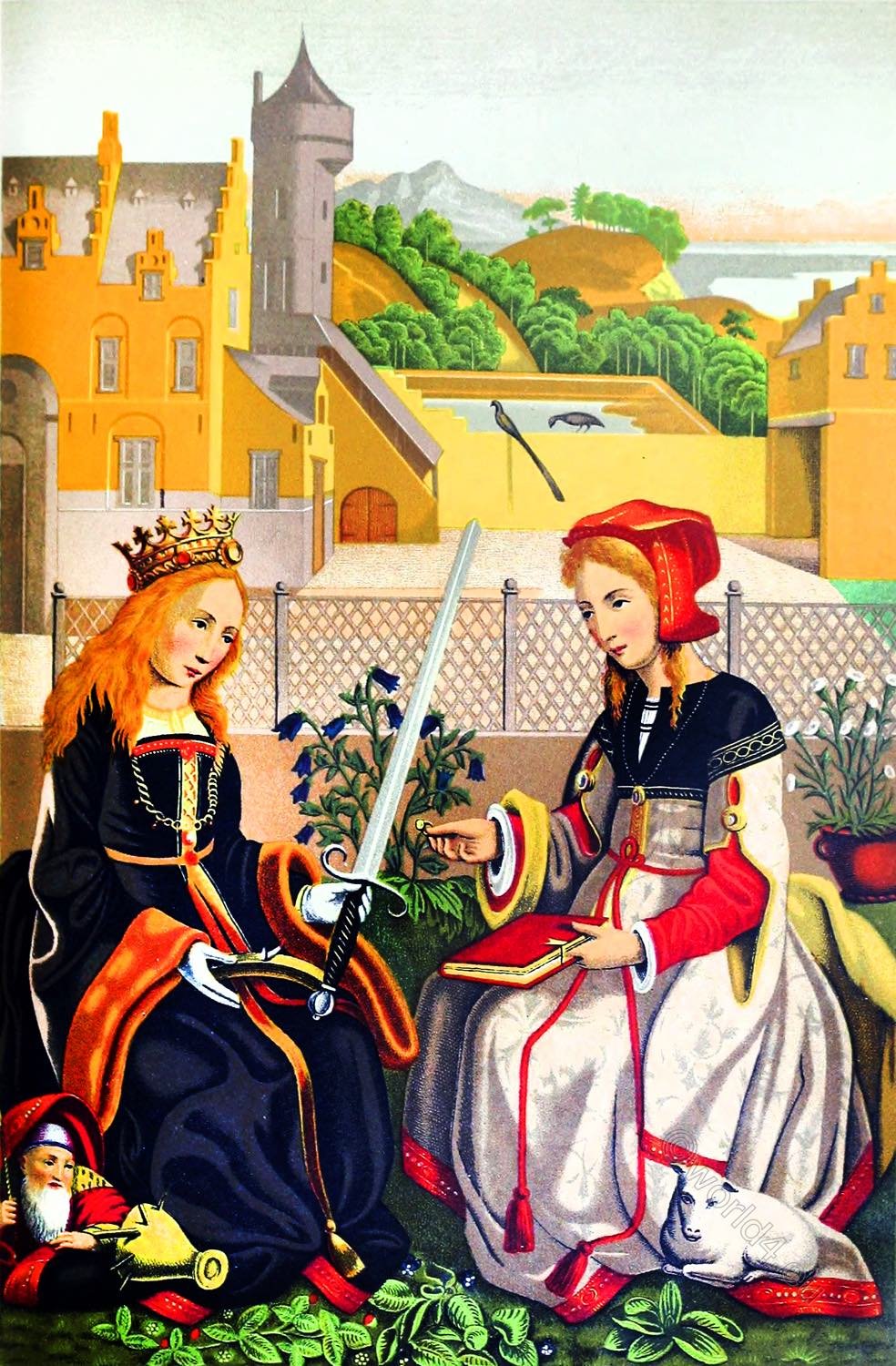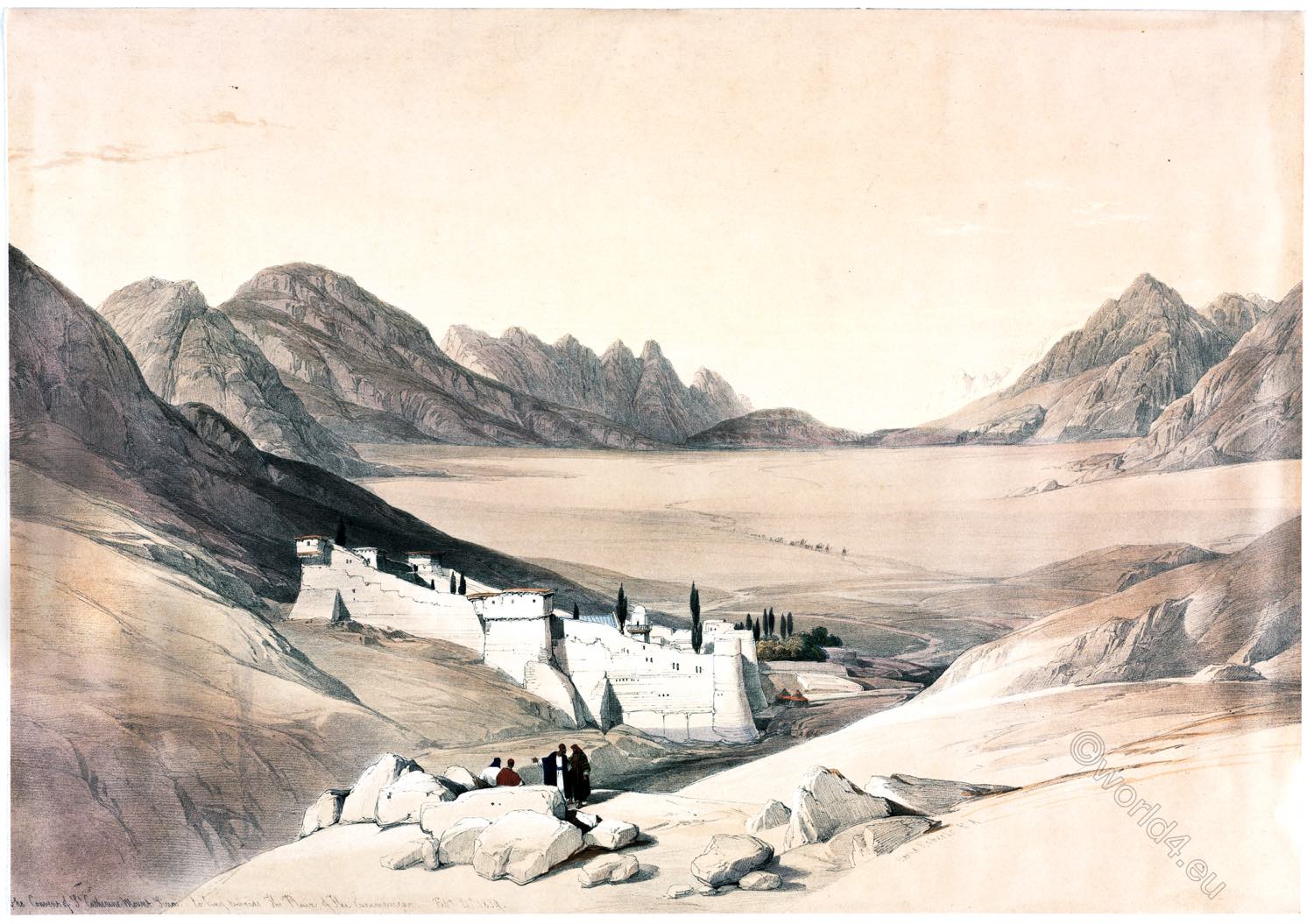
THE CONVENT OF ST. CATHERINE, MOUNT SINAT, LOOKING TOWARDS THE PLAIN OF THE ENCAMPMENT
by David Roberts.
In this title, the traditional name of the Mountain is adopted, without deciding the question of reality. The Artist has taken the Sketch about due South of the Convent, looking upon the track which he pursued from the presumed Plain of the Israelite Encampment.
The general aspects of both the Plain and Mountain unquestionably give a strong sense of fitness for that great transaction, of which the direct purpose was to impress a nation of slaves, Egyptian-born, with homage for the God of Nature and of Revelation. The primitive wildness, the abrupt majesty, and the almost inaccessible height of the pinnacles, seem made for the Throne of Him who “maketh the clouds His chariot, and walketh upon the wings of the wind.”
Here, superior as the actual Presence must have been to all Imagination, the traveller can still imagine the “cloud, the lightning, and the trumpet.” The scene amply filled the mind of a Prophet almost a thousand years after.
Habakkuk, in one of the most renowned bursts of Hebrew poetry, thus records the Descent on Sinai: “God came from Teman, and the Holy One from Mount Paran. His brightness was as the light; He had horns coming out of His hand; and there was the hiding of His power. Before Him went the pestilence, and burning coals went forth at His feet. He stood, and measured the earth; He beheld, and drove asunder the nations, and the everlasting mountains were scattered, the perpetual hills did bow; His ways are everlasting.” 1)
The author of the Biblical Researches, when he entered upon the Plain, observes, “As we advanced, the valley opened still wider and wider, with a gentle ascent, and became full of shrubs and tufts of herbs, shut in on each side by lofty granite ridges, with rugged, shattered peaks, a thousand feet high, while the face of Horeb rose directly before us. Both my companion and myself involuntarily exclaimed, ‘Here is room enough for a large encampment!’
As we crossed the Plain our feelings were strongly affected, at finding here so unexpectedly a spot so entirely adapted to the Scriptural account of the giving of the Law. 2) No traveller has described this Plain, or even mentioned it, except in a slight and general manner; probably because most of them have reached the Convent by another route. … As we approached the Mountain, our head Arab, Beshârah, became evidently quite excited.
He prayed that our pilgrimage might be accepted, and bring rain; and with great earnestness besought, that when we ascended the Mountain, we should open a certain window in the Chapel there towards the South, which, he said, would certainly cause rain to fall.
He also entreated, almost with tears, that we should induce the Monks to have compassion on the people, and say prayers, as they ought to do, for rain. When told that God alone could send rain, and that they should look to Him for it, he replied, ‘Yes, but the Monks have the book of prayer for it; do persuade them to use it as they ought.’ There was an earnestness in his manner which was very affecting, but cannot be described.” The Arab’s solicitation was trivial; but it was evidently connected with the holiness of the ground.
Having, with his companion, obtained admission to the Convent, the traveller savs, “I was affected by the strangeness and overpowering grandeur of the scenes around us and it was for some time difficult to realize the consciousness that we were now actually within the very precincts of that Sinai, on which from the earliest childhood I had thought and read with so much wonder.
Yet, when at length the impression came with its full force upon my mind, although not given to the melting mood, I could not refrain from bursting into tears.” 3)
1) Habakkuk, iii. 3. 2) Exodus, xix. 20. 3) Biblical Researches,i. 130-134.
Source: The Holy Land, Syria, Idumea, Arabia, Egypt, & Nubia, by David Roberts (British, 1796-1864), George Croly, William Brockedon. London: Lithographed, printed and published by Day & Son, lithographers to the Queen. Cate Street, Lincoln’s Inn Fields, 1855.
Continuing
Discover more from World4 Costume Culture History
Subscribe to get the latest posts sent to your email.

